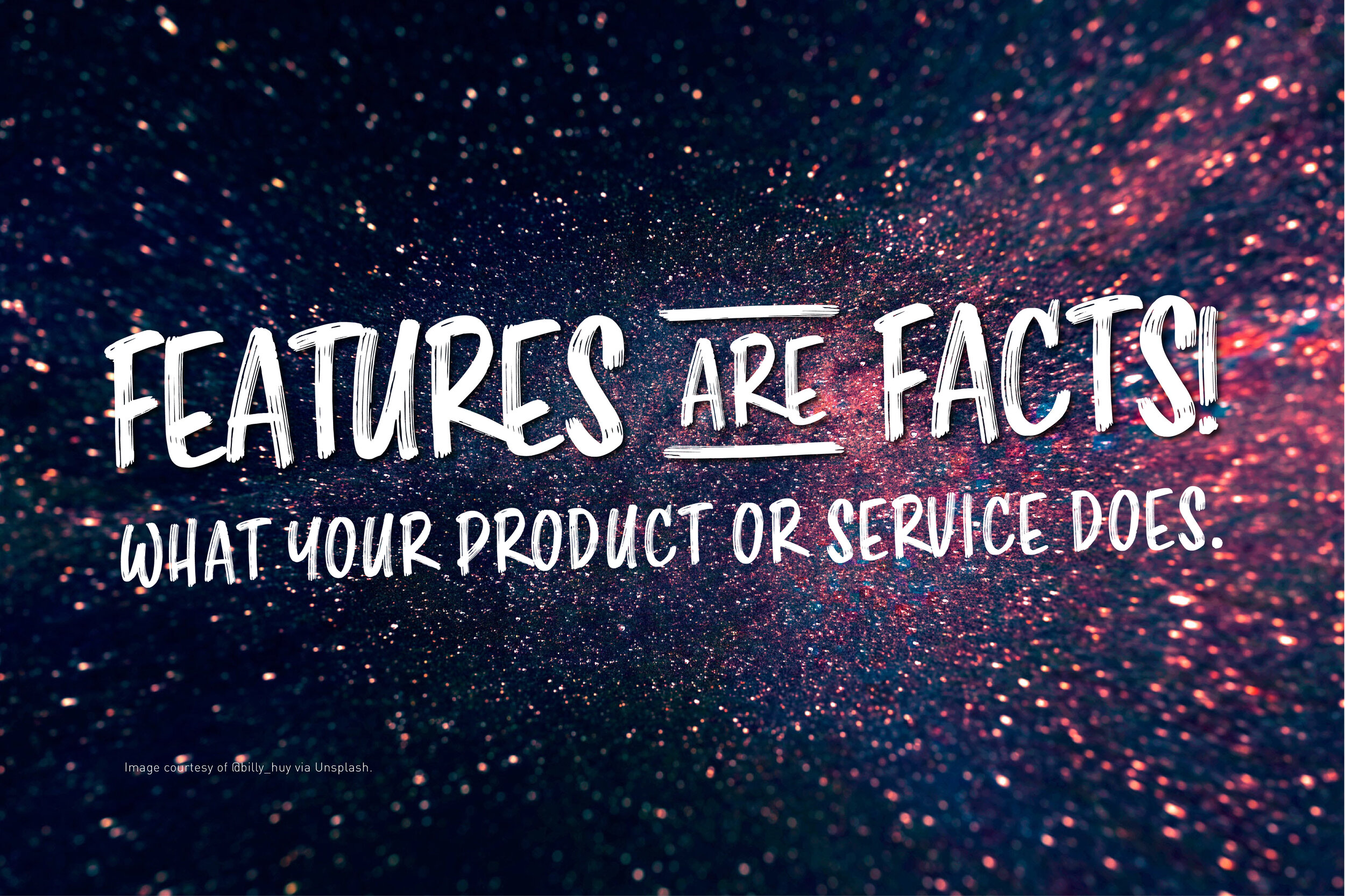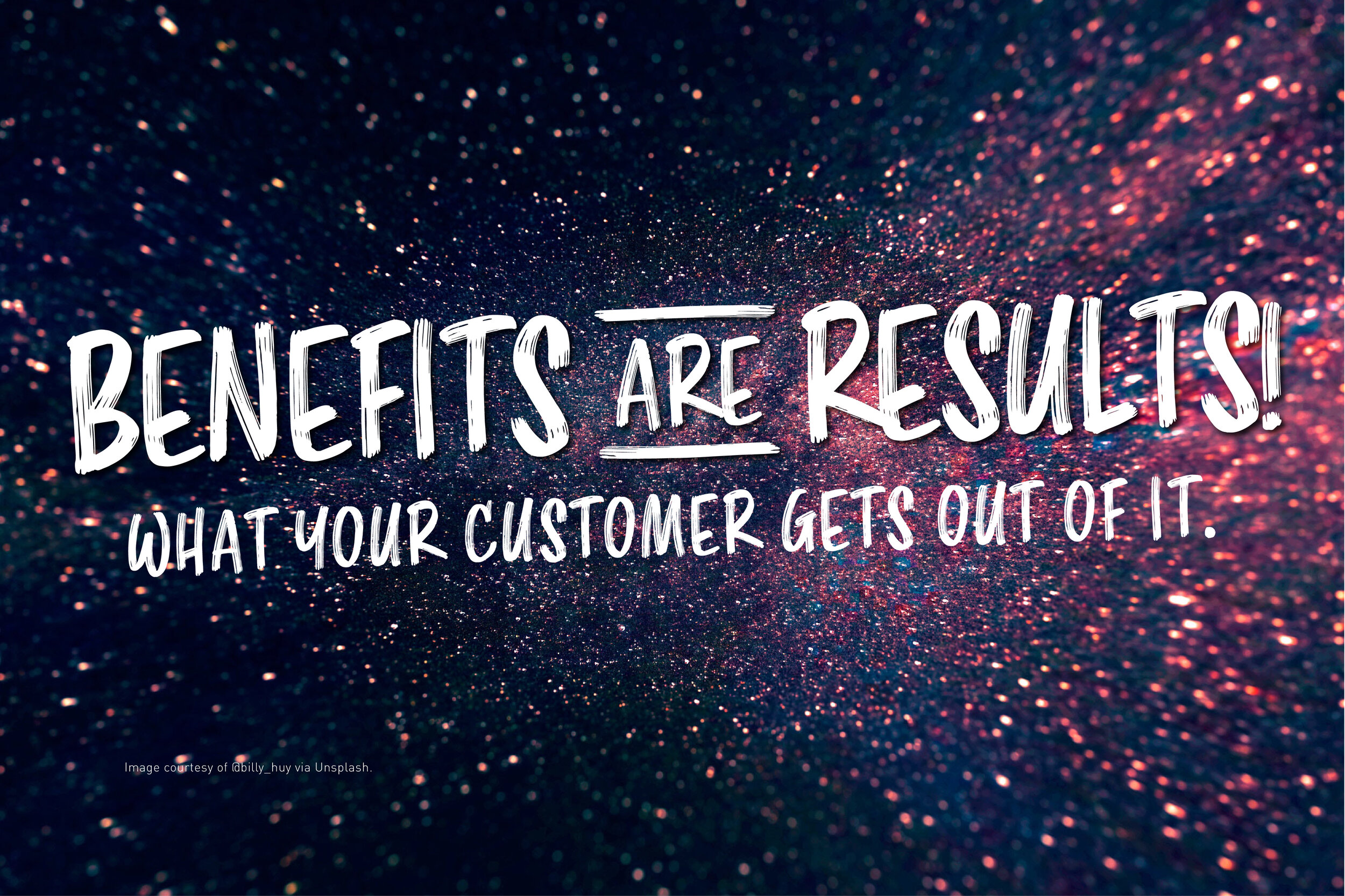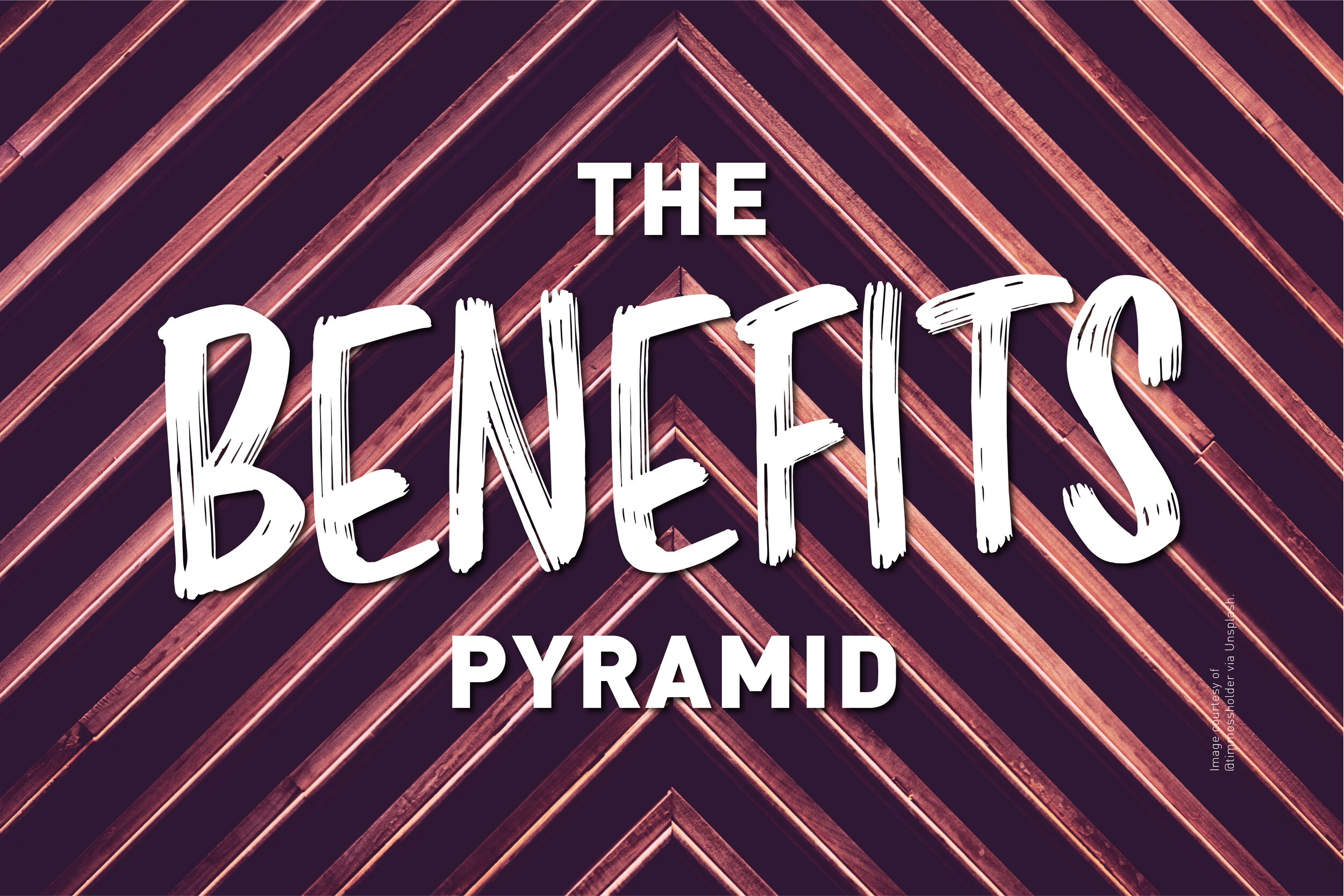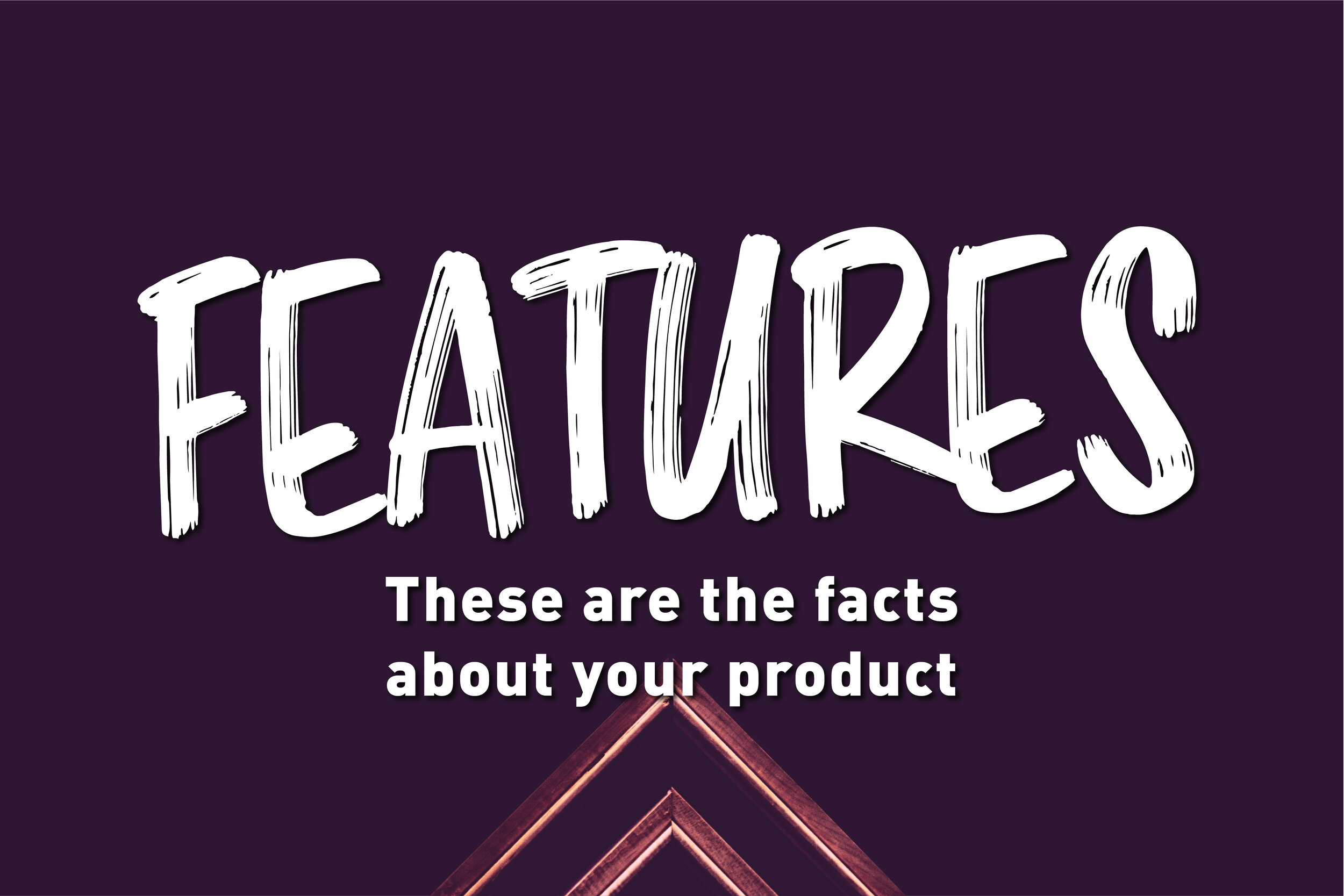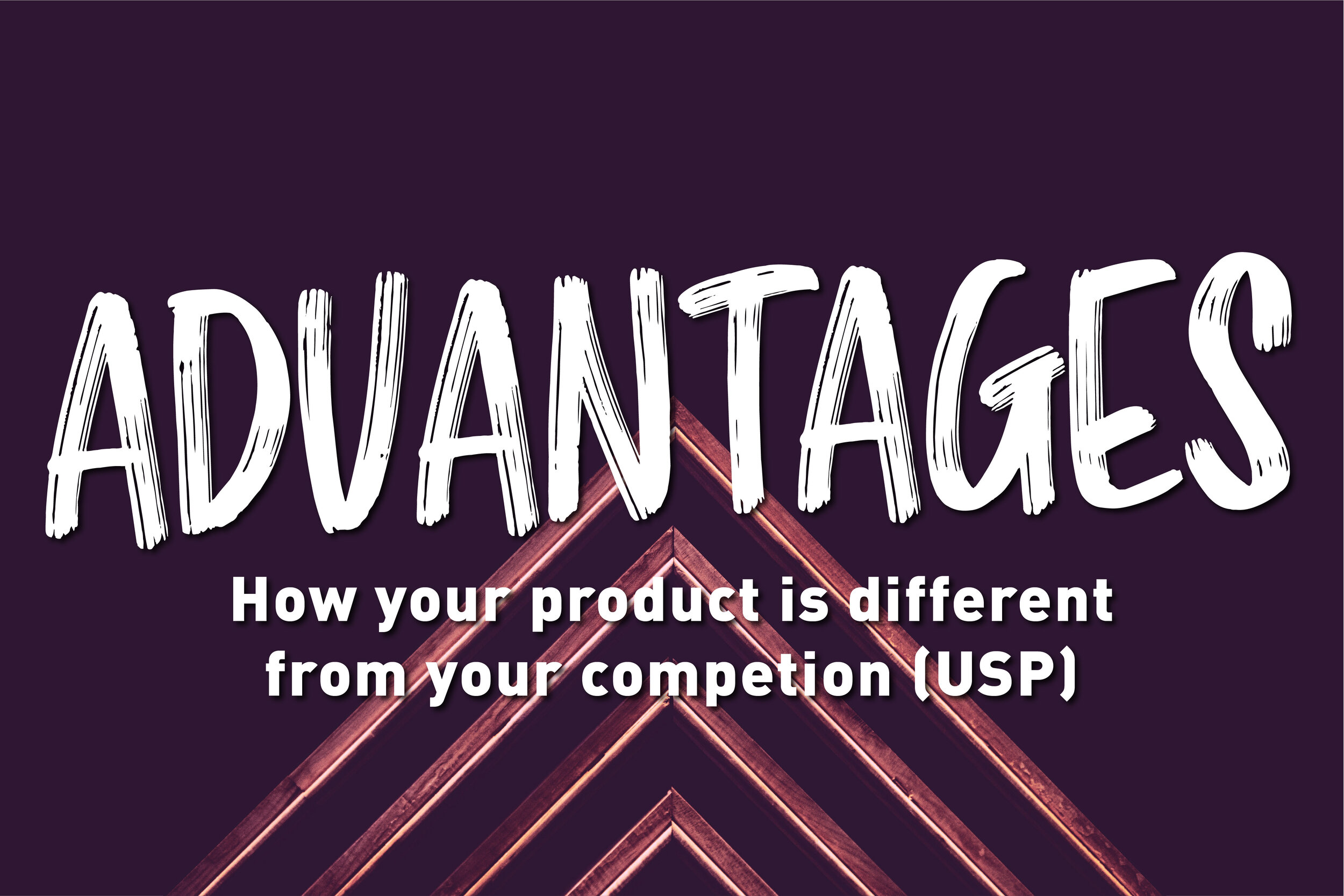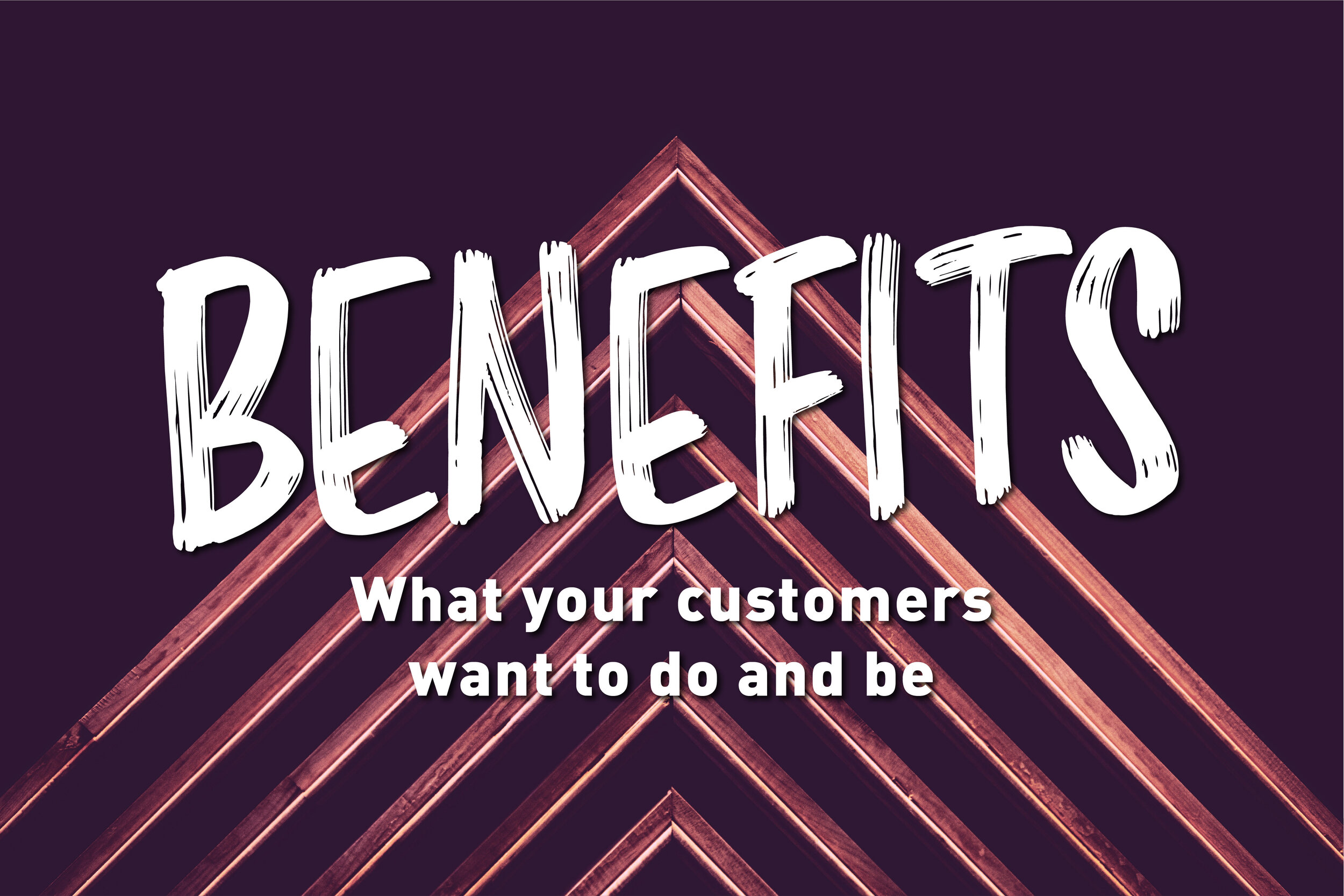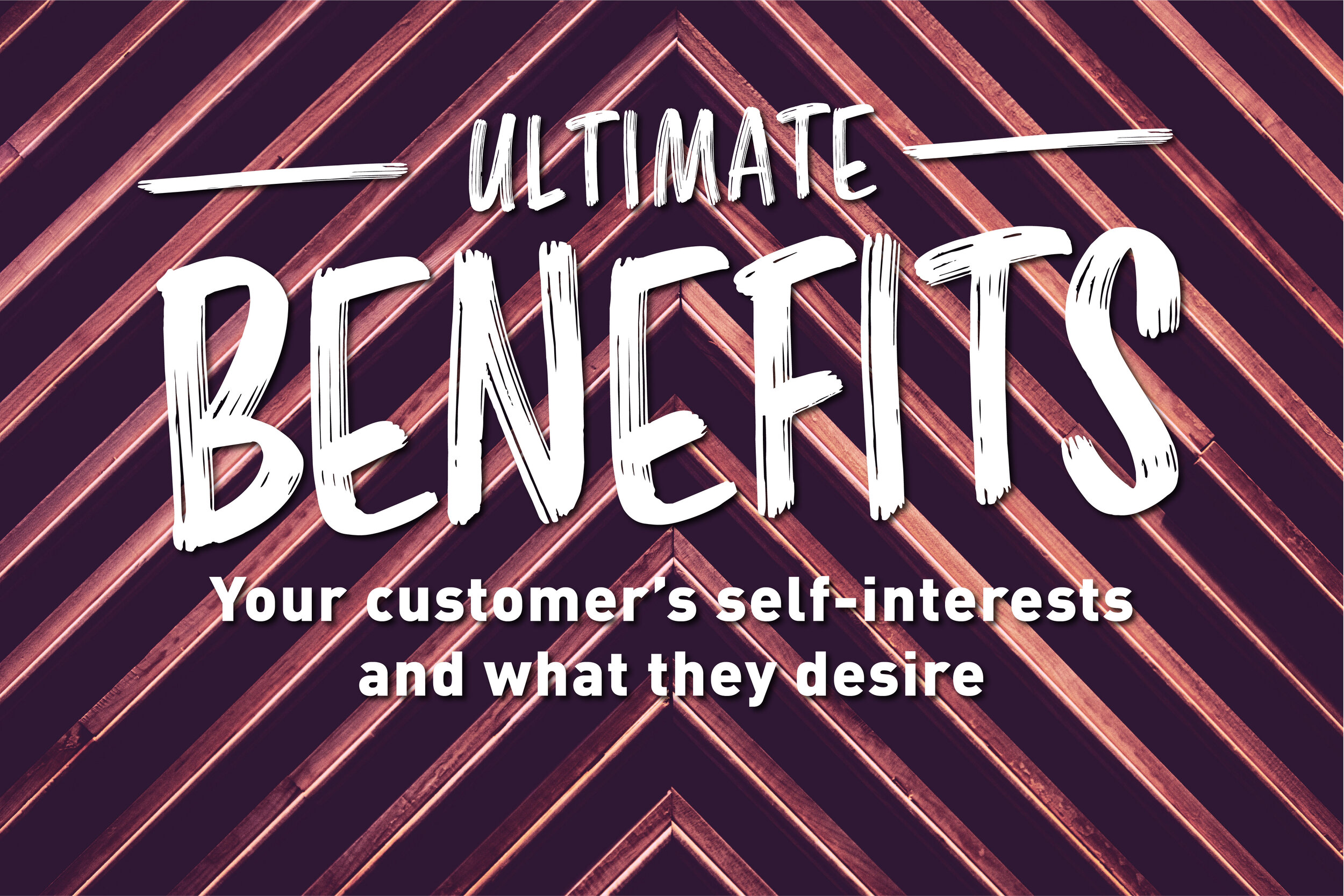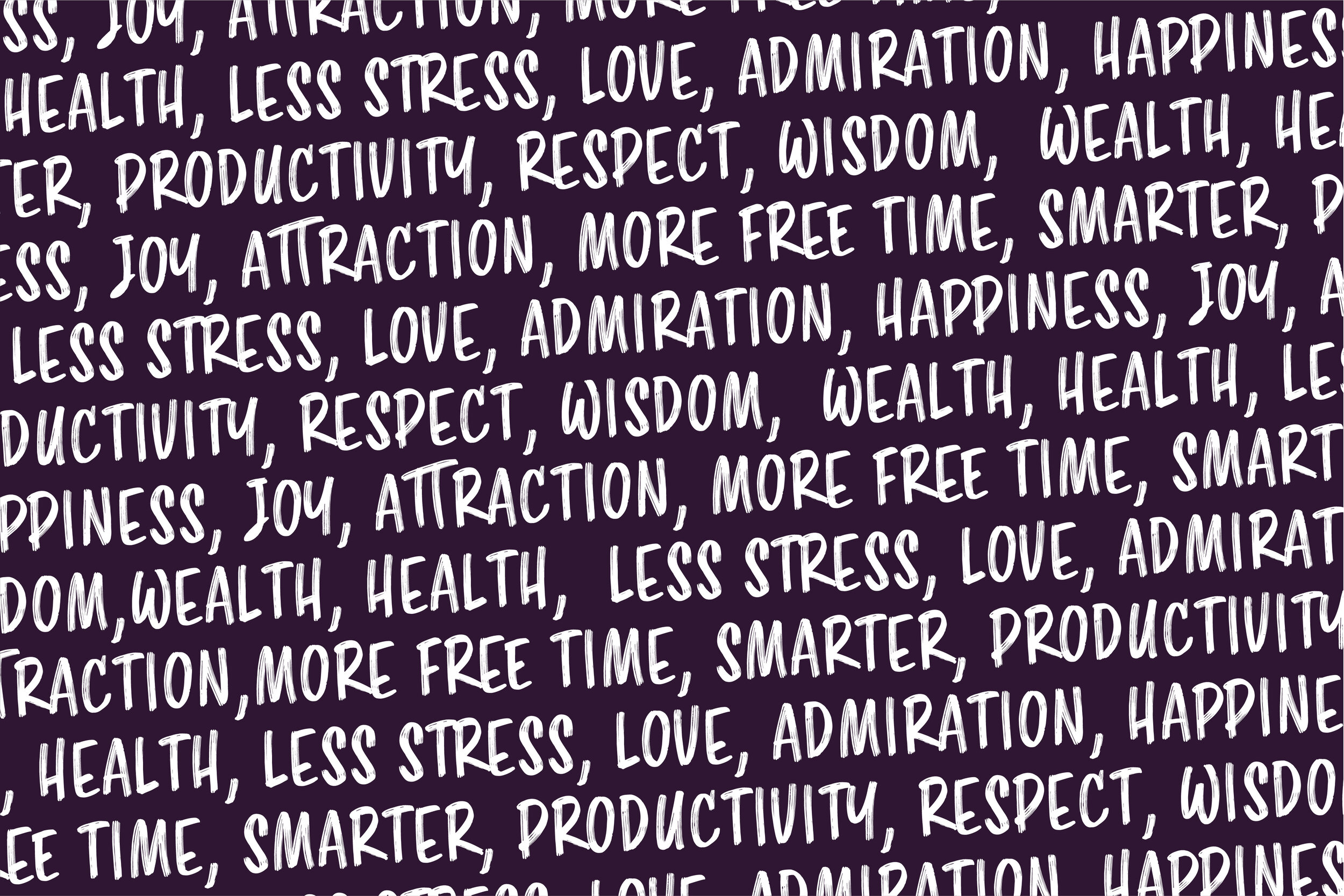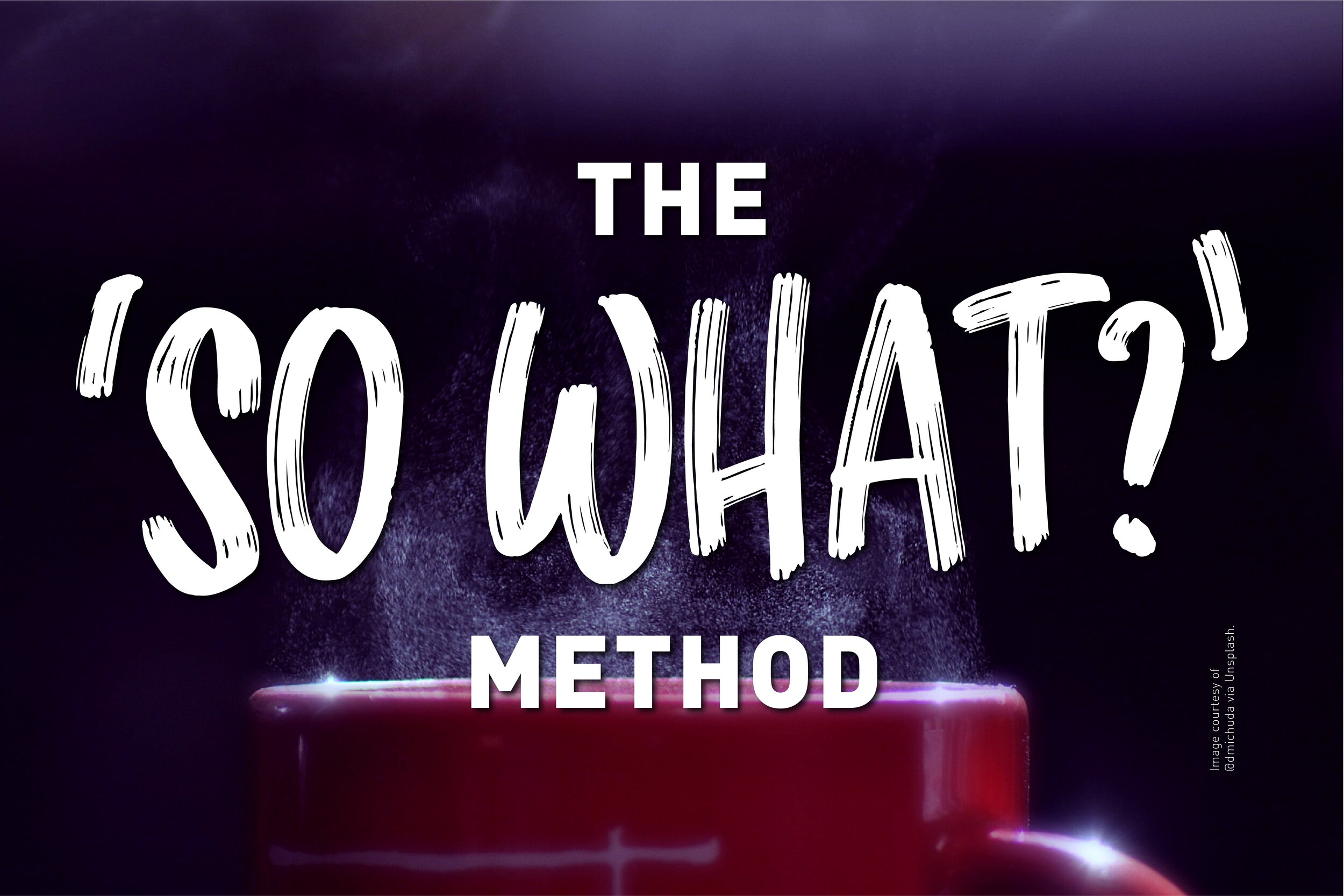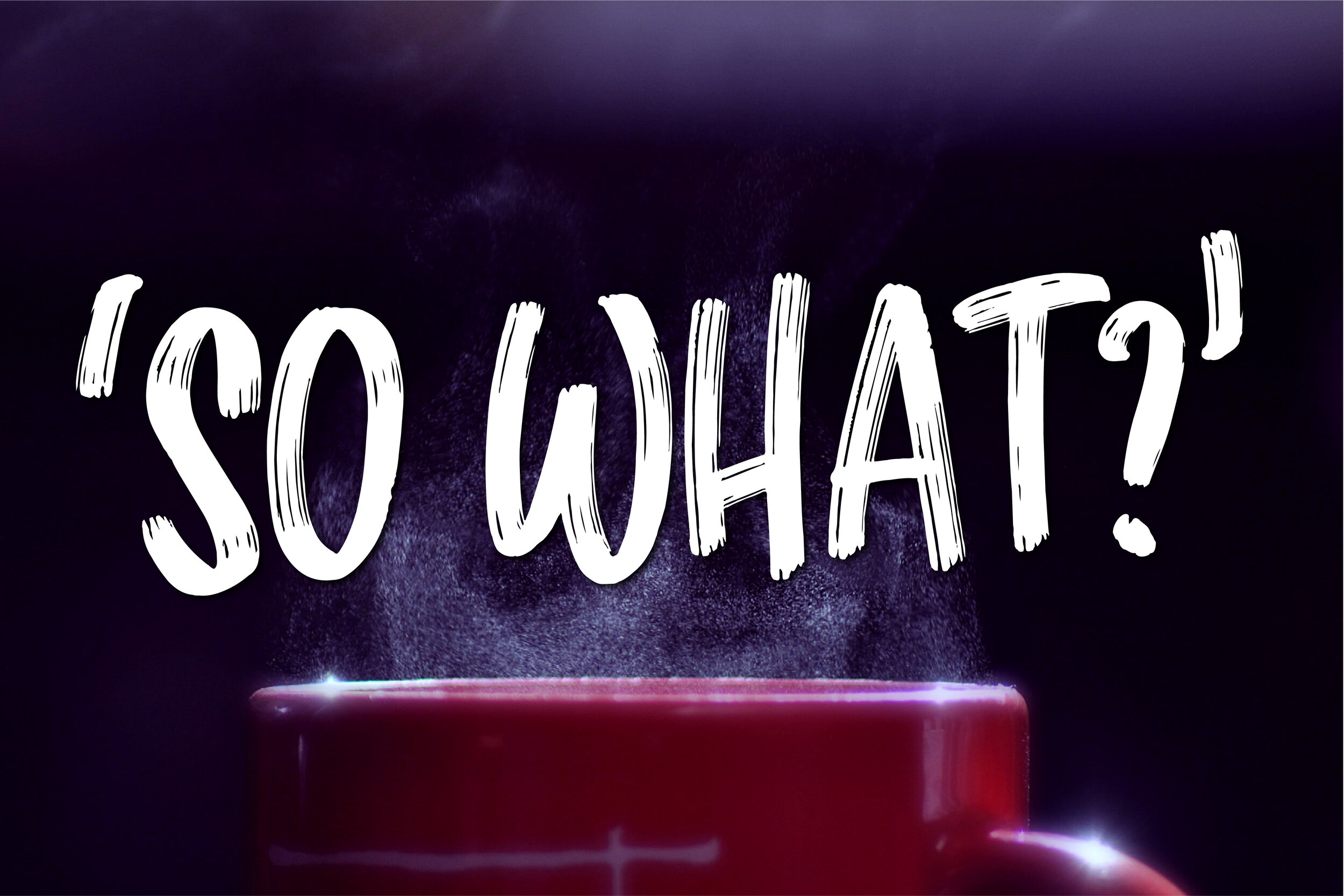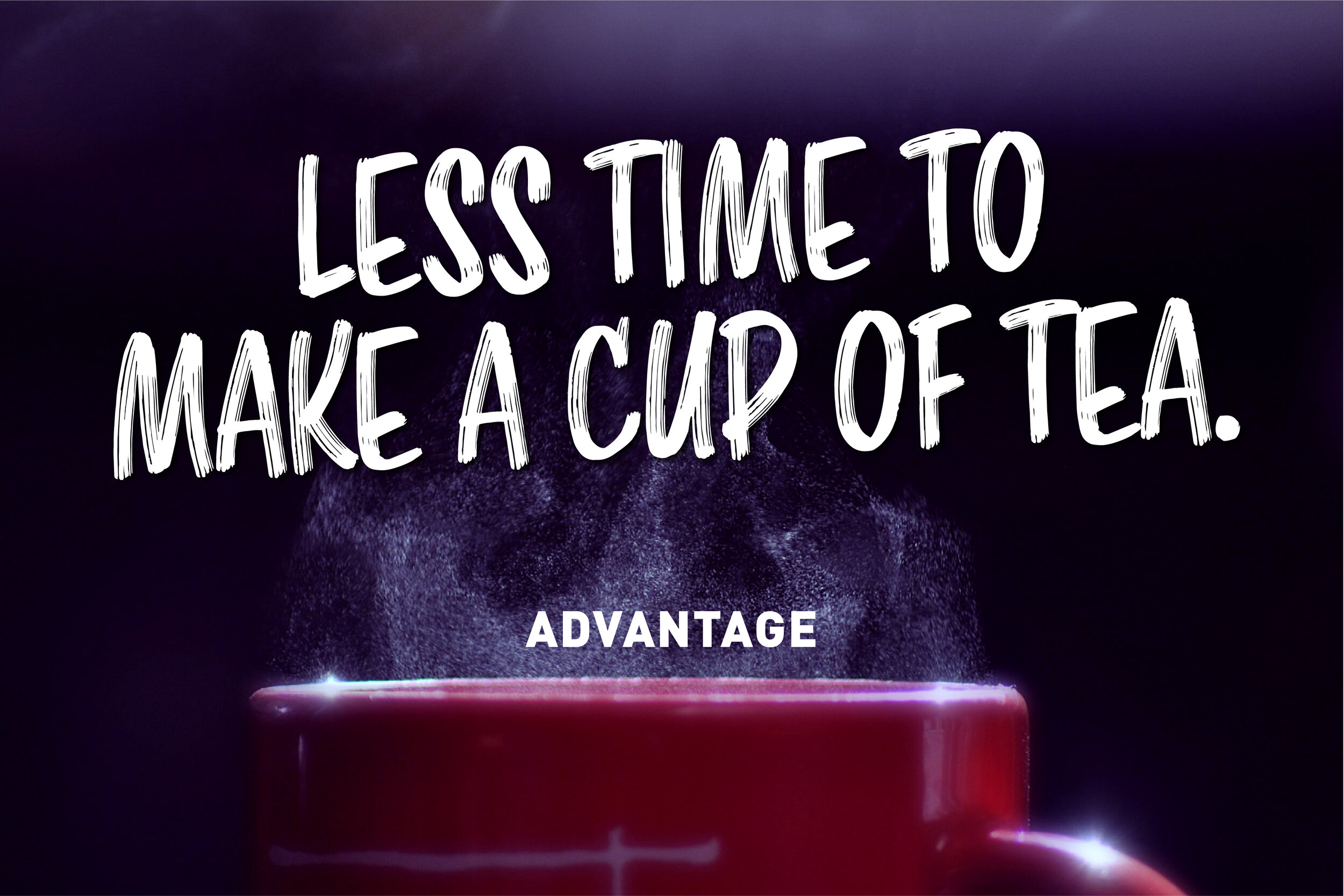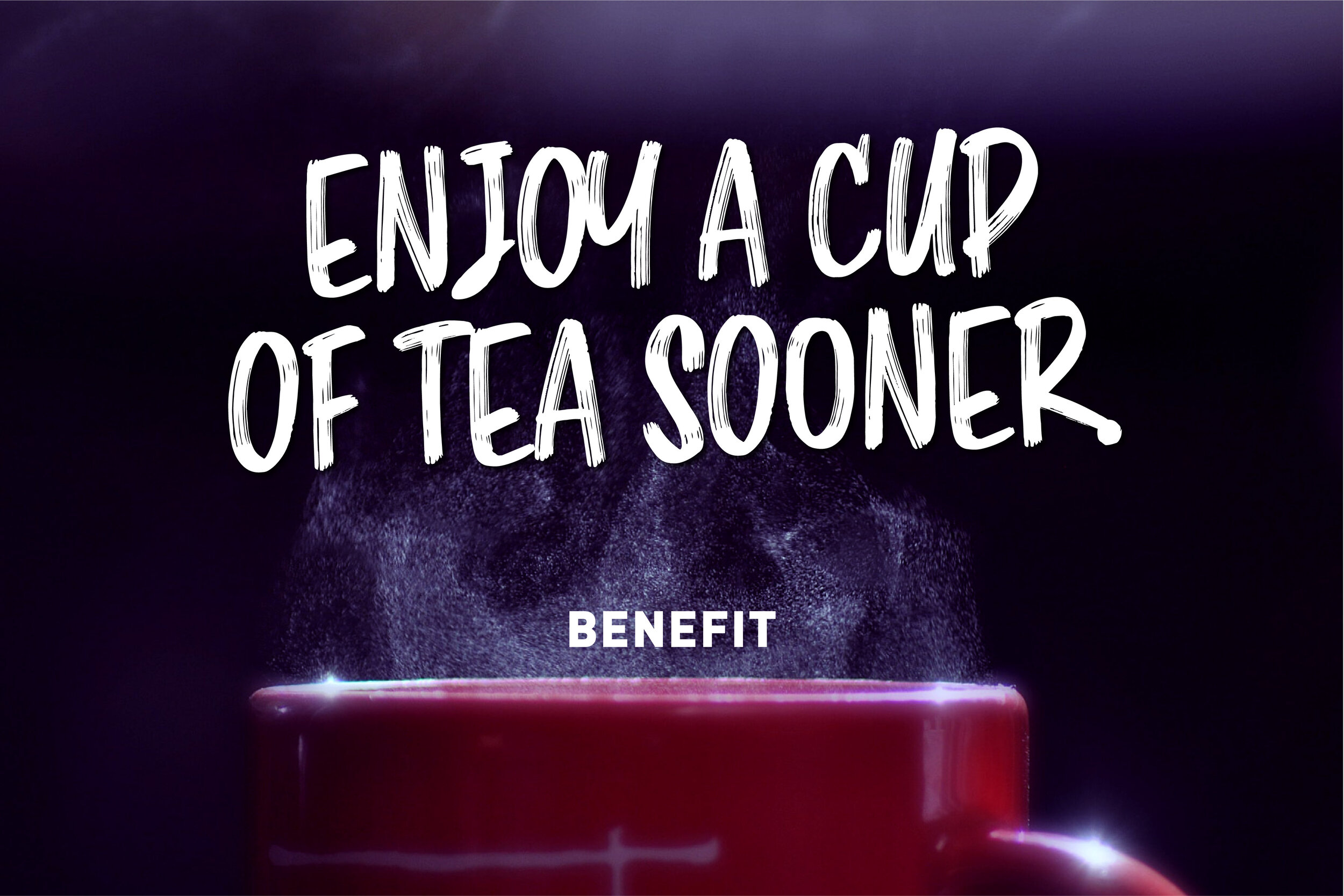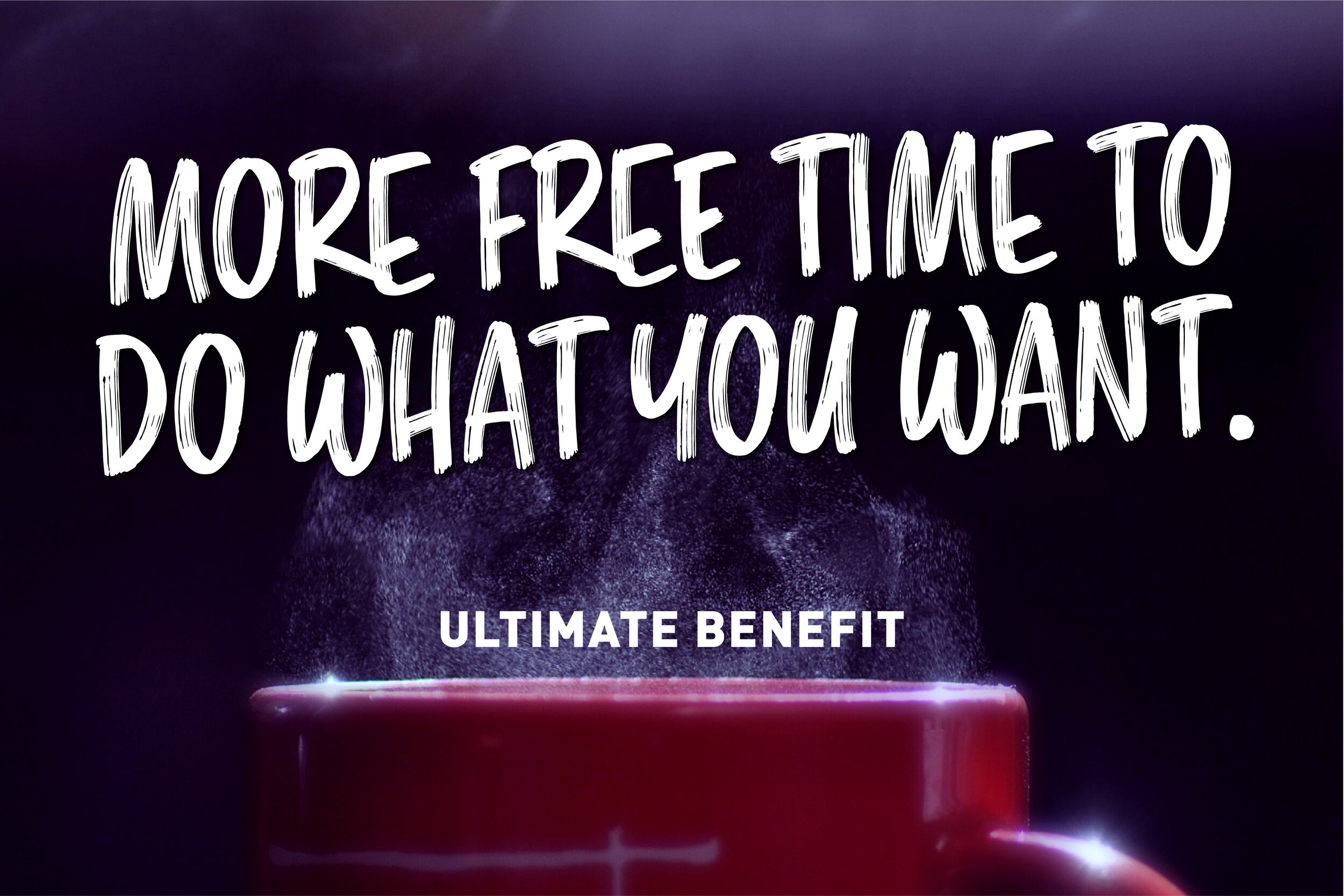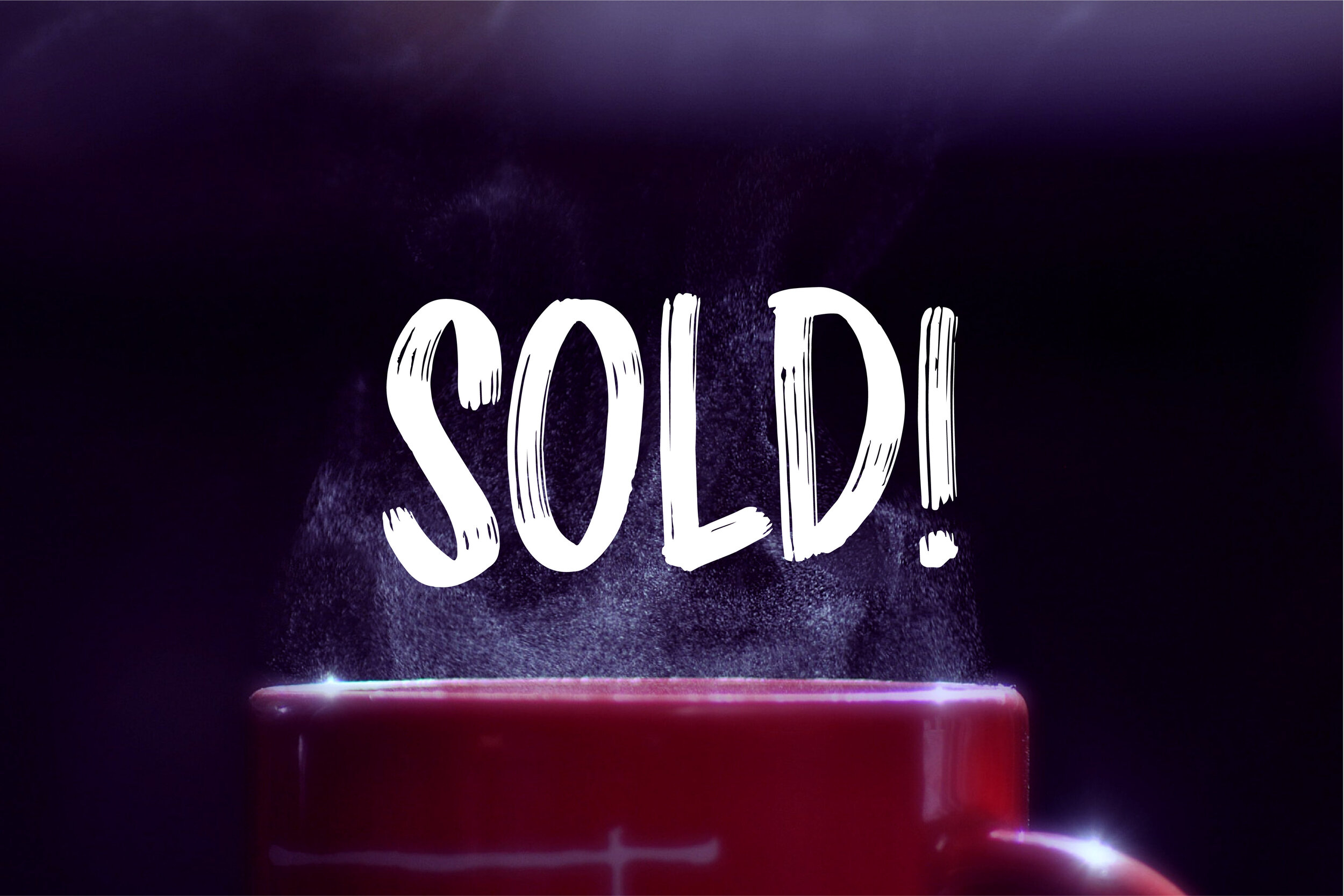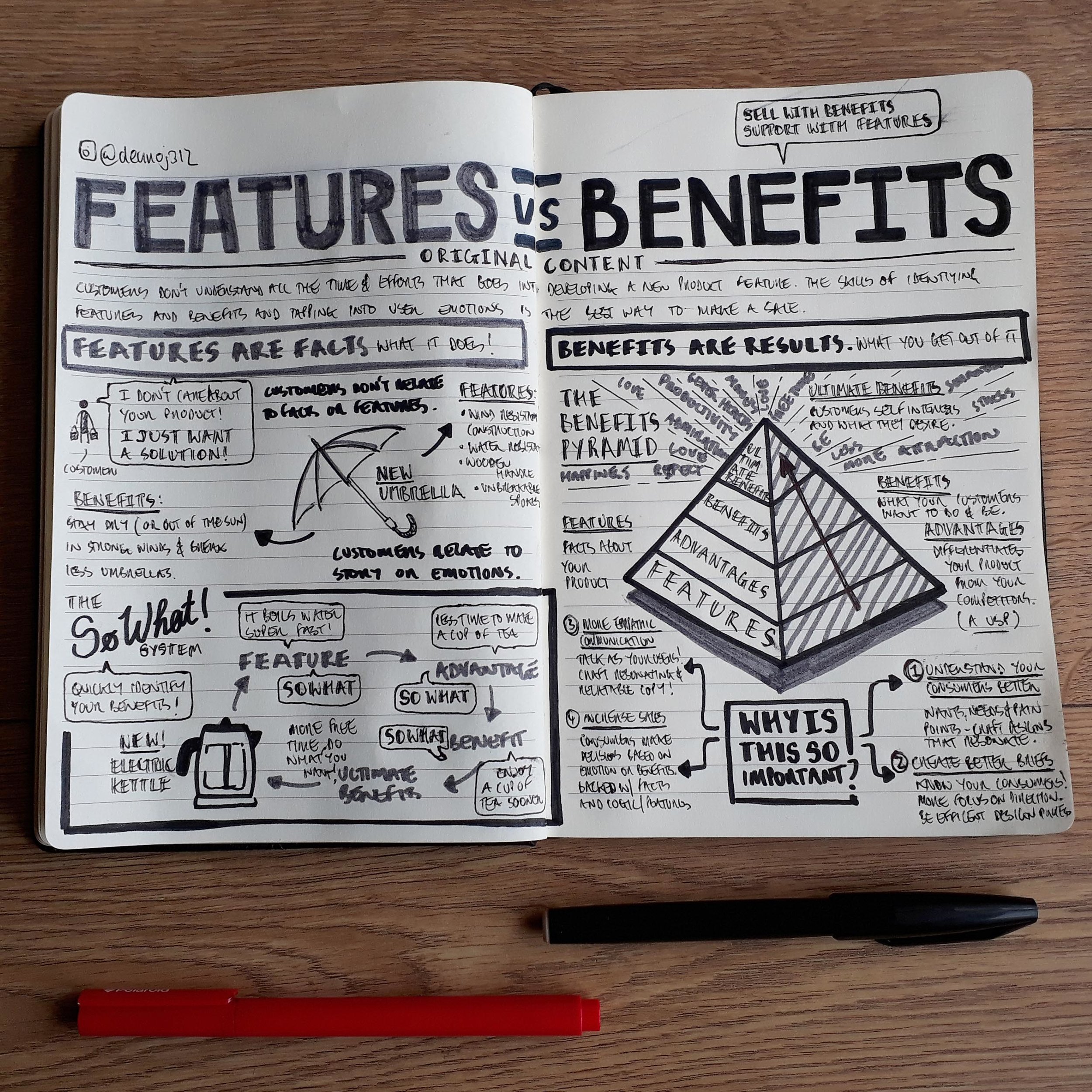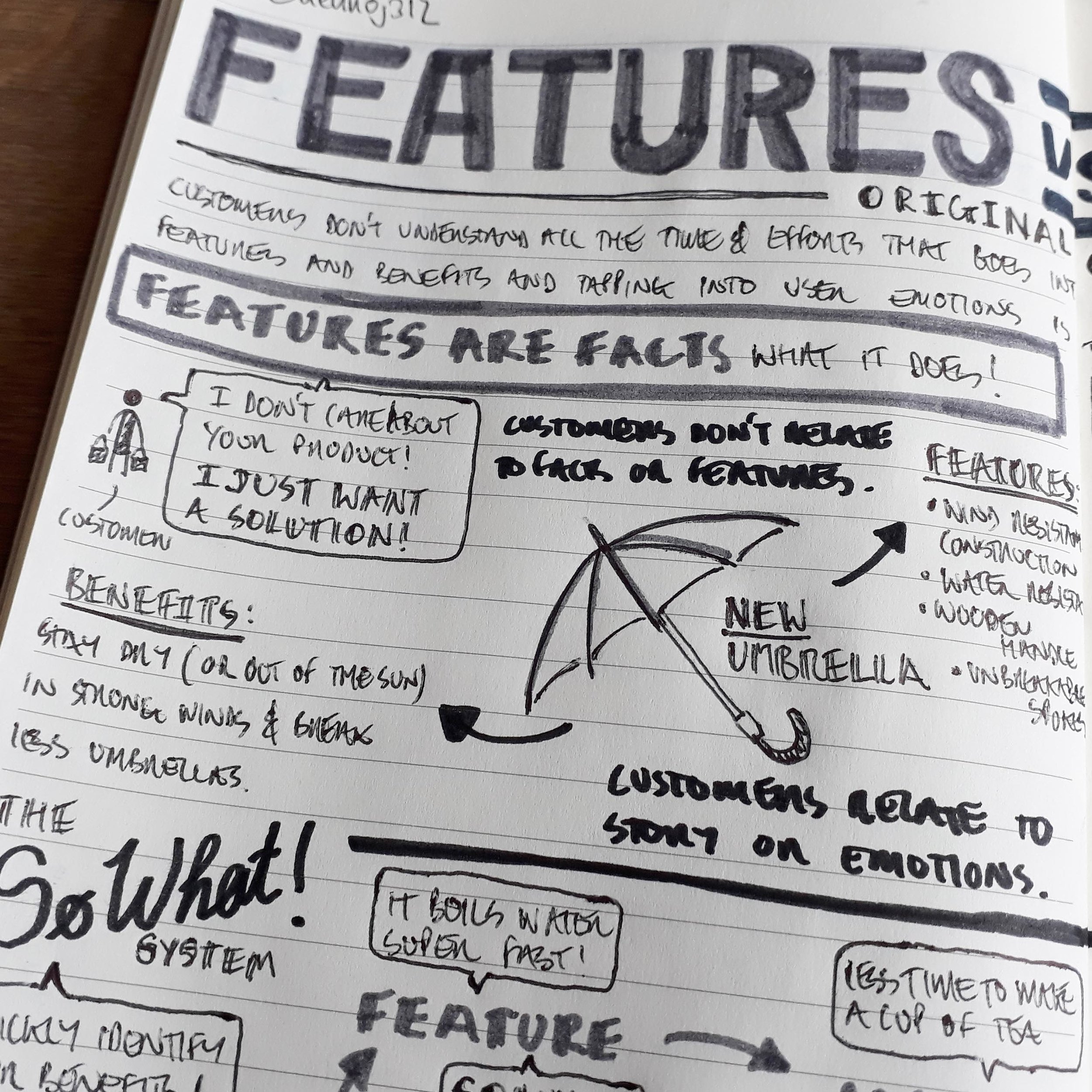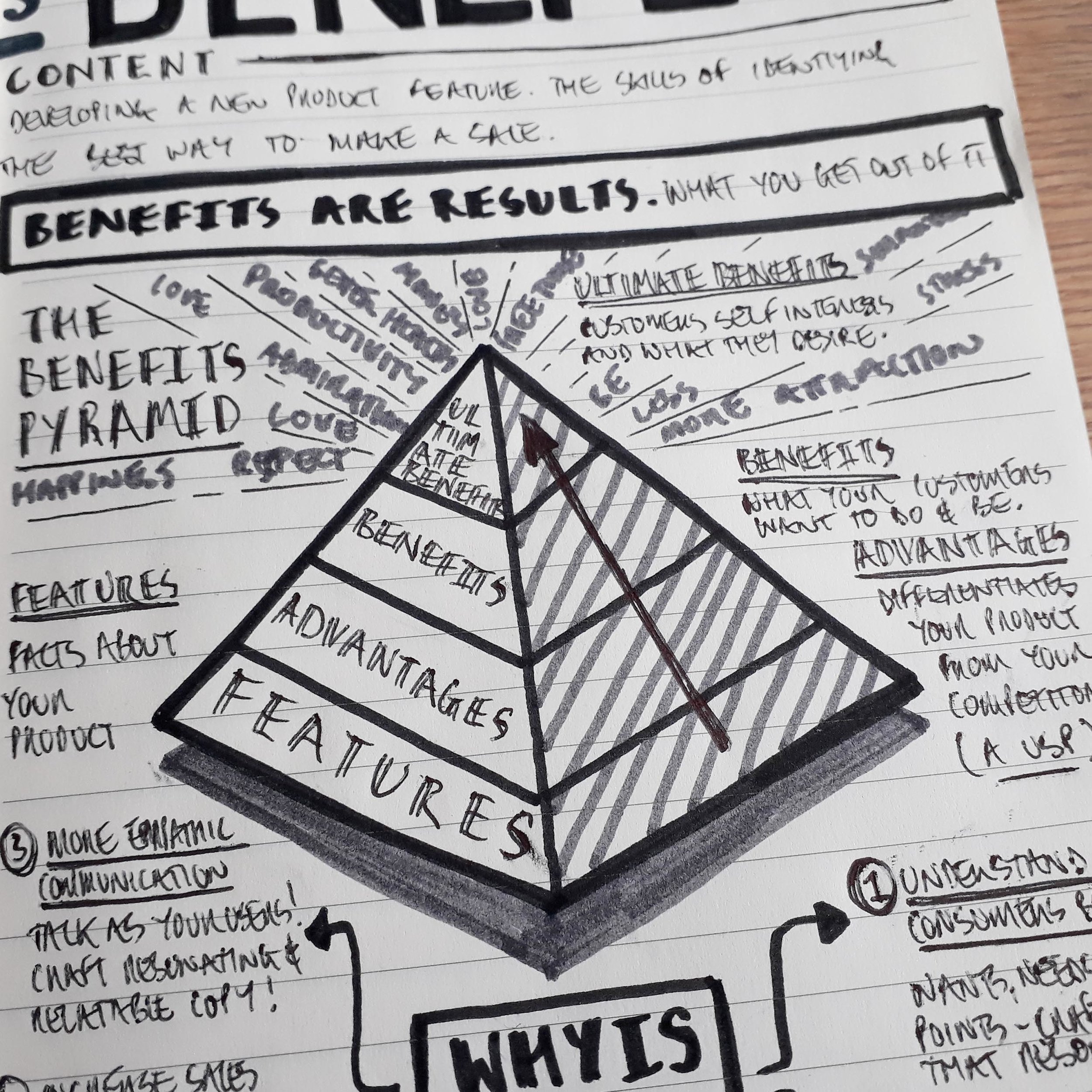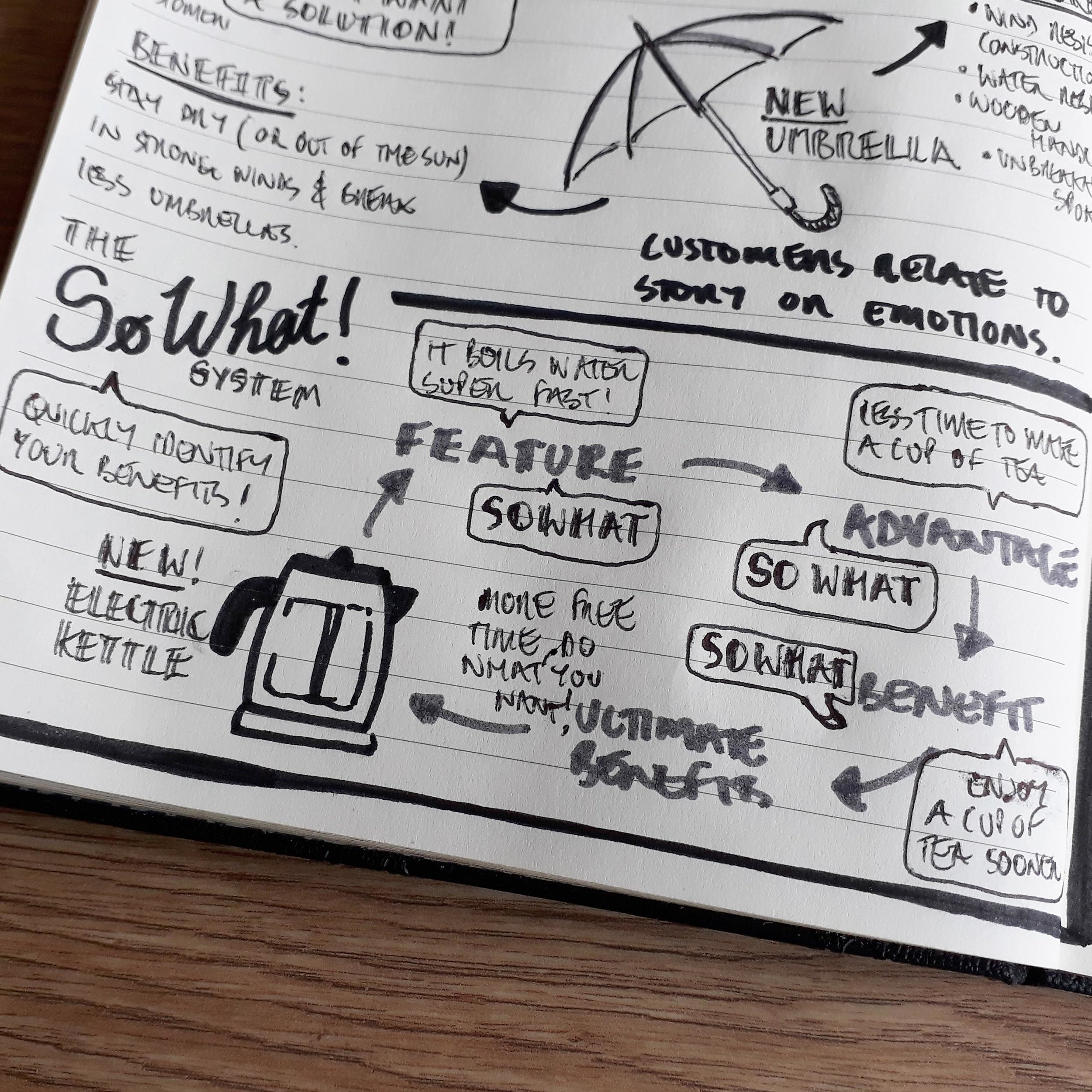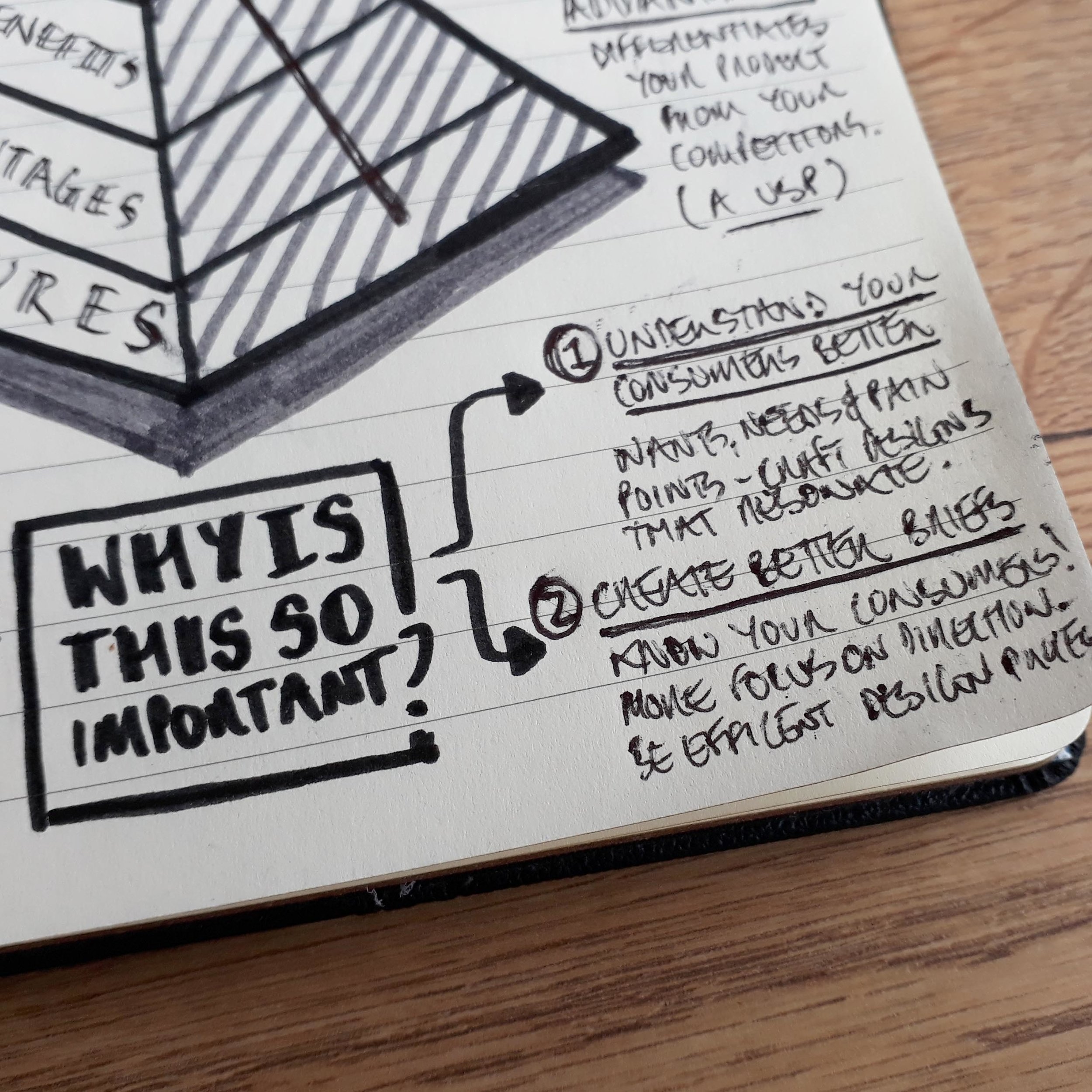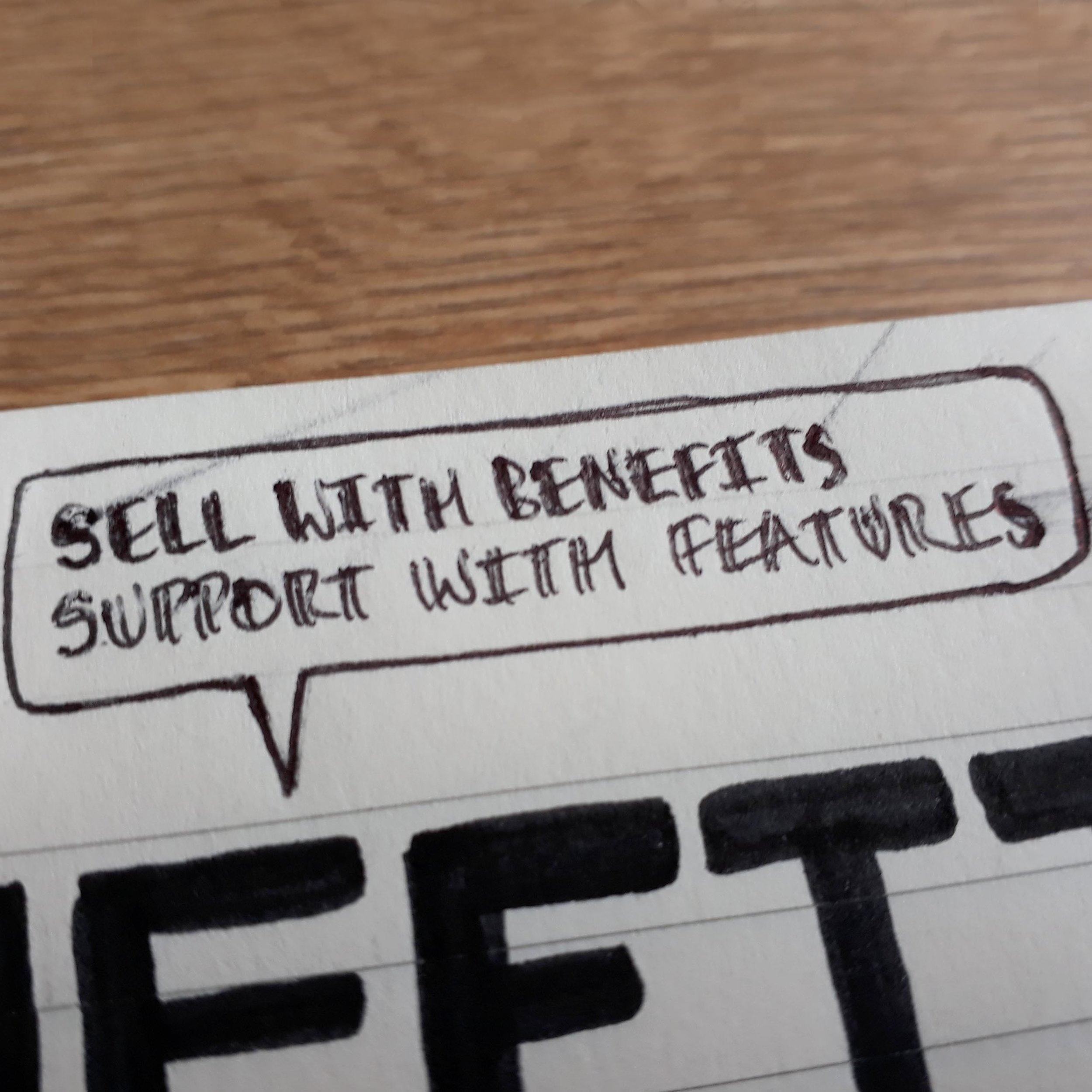Features & Benefits
Image courtesy of @bel2000a via Unsplash.
Reading time: 5 mins
One of the universal principles within design, marketing, sales, and advertising is understanding features and benefits, including the differences between them and how to leverage them to truly connect with consumers.
Unfortunately for creative professionals, consumers simply don’t understand all of the blood, sweat and tears that goes into developing a new product feature.
Developing a new product feature is only half the battle.
New features need to correlate with benefits that tap into consumers' emotional needs. This is the most effective way to make a sale.
Theodore Levitt said it best: “People don’t want to buy a quarter-inch drill, they want a quarter-inch hole”.
In this article, I will provide definitions of both features and benefits along with a couple of techniques that you can use to transform your features into benefits, explaining why this is such an important addition to your design process.
First things first, let's start by defining both features and benefits.
For a principle that’s so universally fundamental in creative businesses, it’s funny that so few can actually define the two concepts.
As a result, many solutions miss the chance to create a solution that resonates with their target consumers.
If you only take one thing away from this blog article, please let it be this:
Features are facts: What your product or service does - logic-based, sometimes more numerical.
Benefits are results: What your customer gets out of it - more emotional and value-based.
Here are a couple of examples to explain:
Electronic Children's Toy
Feature: Batteries included.
Ready to use straight from the box
Benefit: Child not upset when the parent hasn’t got the right batteries
Electric Kettle
Feature: Faster boiling.
Enjoy your cup of tea sooner.
Benefit: More time to do things you actually want to do.
Umbrella
Feature: Wind-resistant construction.
Stay dry even in windy weather.
Benefit: Look good in all weather
Here’s a hard-to-swallow fact: consumers don't really care about your product.
All consumers care about is what your product can do for them.
What’s in it for them?
This is where consumers identify the value in products: they’re just looking for solutions to their problems, even to problems they never knew they had.
Shopping is an emotion-fuelled activity.
Consumers don’t relate to facts and features, they relate to story and emotions.
Therefore, your design solution should elicit an emotional response.
Using emotions linked to the benefits of your product can be a powerful influence on consumers’ purchasing decisions.
If you are currently relying on features alone to sell your products, you’re putting pressure on the consumer to figure out why they should buy your product.
This extra mental work is just another barrier to a sale, and another reason for the consumer to not purchase your product.
Now we’ve outlined some definitions and foundational knowledge of features and benefits, we can start to build some techniques to help take you from a feature to a benefit.
I should mention that these two techniques are not my own, I came across them during my research.
The first technique is called The Benefits Pyramid.
It’s a great visual way to process the stages you should go through when explaining a feature and describing its benefit.
Starting at the bottom tier, you state your features (these are the facts about your product).
Next is the advantage, the connecting part between feature and benefit.
It’s what differentiates your product from your competitors’.
These are usually called unique selling points (USP).
Next is the benefit (what your consumer gets), what the consumer wants to do and be.
The top of the pyramid in the ultimate benefit, this is your consumers’ self-interest and what they desire most, these are normally raw human emotions like respect, love, admiration, comfort, and security, to name a few.
The second technique is known as the So what?’ system, a technique is for those in a hurry!
It enables you to quickly identify your benefits by asking “so what?” after each selling point until you get to the ultimate benefit.
Here’s a quick example using an electric kettle with a new super-fast boiling technique.
It boils water super fast (feature)
So what?
Less time to make a cup of tea (advantage)
So what?
Enjoy a cup of tea sooner (benefit)
So what?
More free time to do what you want (ultimate benefit)
SOLD!
Armed with these two techniques, you can transform features into benefits in a straightforward way.
For those of you reading this with your arms crossed, thinking this is a bunch of new-age-design gibberish, here are some reasons why it’s important to understand and use benefits over features (i.e. why you’re wrong):
Understand your consumers better
Standard model demographics will only get you so far with creating a design solution that resonates with consumers increasingly these models are becoming outdated (a subject for a whole other blog article).
As consumer demand grows for a more individual approach to design, we need to double-down the building of design solutions for our target consumers’ wants, needs, and pain points.
Designing for ‘the few’ will enable you to reach ‘the many’.
Better design briefs
Building on the first point - better understanding consumer desires and needs, we can create better design briefs, starting with better design parameters to be more focused with our design process and more efficient with our time.
This added time can be directed towards developing design solutions that consumers will perceive to be more valuable by speaking to them through emotional-based benefits.
More empathic copywriting
A firm understanding of the features and benefits of your products allows you to better communicate throughout your design process.
It increases your ability to speak in the same language as your consumers, craft relatable and resonating copy for all your presentations and pitches but especially on packaging and in marketing and advertising.
Repeated features in copywriting can look as though you don’t know why the consumer should purchase your product or service, so the consumer won’t have any faith in your product either.
Increase sales
As mentioned earlier in the article, consumers base a lot of their purchasing decisions on emotion, through understanding a story and the benefits.
Of course, these will be backed up with the features and facts, but speaking to your consumers on their level will draw them into your products.
It would me a blog written by me without some preparation nudenotes - so here they are:
Want more?
Head over to our shop, where you can grab PDF copy of this blog, all the preparation nudenotes, plus two worksheet templates for the two method for uncovering your true benefits.
That’s for this deep dive blog on Features & Benefits!
I hope it’s inspired you to take another look at the way you use features and benefits in your design process and solutions.
If you have any questions, pop them in the comments, and we’ll get them answered.
I just wanted to say a massive thank you to all my sources of inspiration: Chris Do and the whole team at The Futur, David Brier, Blair Enns, Fabian Geyrhalter and Douglas Davis. Not forgetting every source from my research-trawling of the internet, especially entrepreneur.com, wordstream.com, and strategiccontent.com, just to name a few.
Remember…
Sell with benefits.
Support with features.



